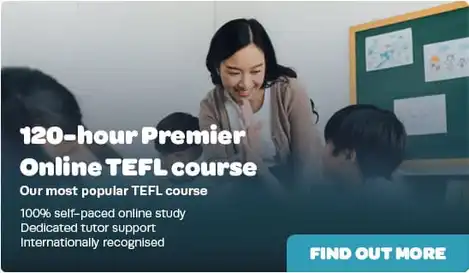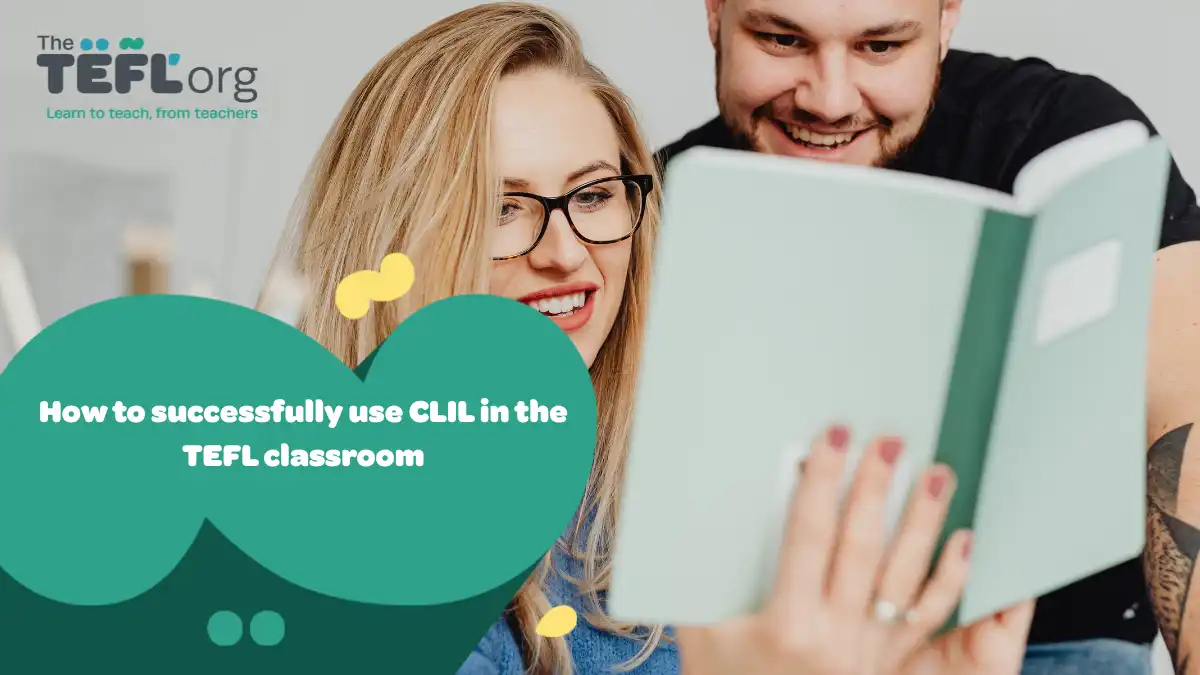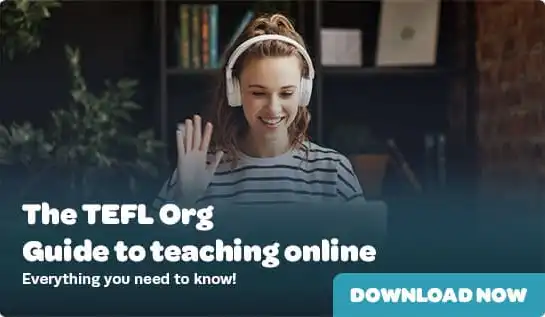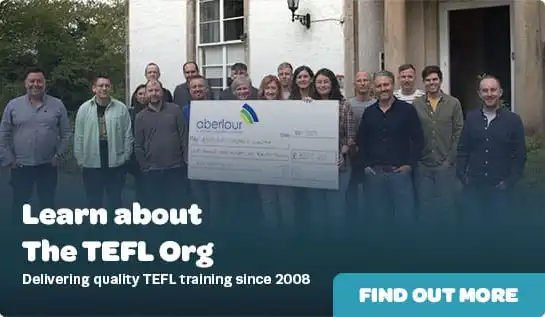- TEFL Courses TEFL Courses
- View all TEFL courses
- 120-hour Premier Online TEFL Course
- 200-hour Level-5 Online TEFL Course
- Online TEFL Courses
- Classroom TEFL Courses
- Combined TEFL Courses
- Virtual TEFL Courses
- TEFL Course Bundles NEW
- Advanced TEFL Courses
- TEFL Lesson Plans & Resources
- TEFL Gift Vouchers
- Which TEFL course is right for you?

- New to TEFL New to TEFL
- Locations
- TEFL Jobs
- Teach Abroad Teach Abroad
- Teach English Abroad
- Teach English in Japan
- Teach English in South Korea
- Teach English in Spain
- Teach English in China
- TEFL Salaries Abroad
- Requirements for teaching abroad
- Teach English abroad without a degree
- How to find teaching jobs abroad without experience
- Can you teach English abroad as a non-native speaker?

- Teach Online
- About Us
- Blog
- Podcast

How to successfully use CLIL in the TEFL classroom
Teaching English is about far more than worksheets and repeating phrases. Sometimes, you need to make the language feel real, connecting it to subjects your students really care about. That’s where Content and Language Integrated Learning (CLIL) comes in.
Using CLIL, teachers can be creative while getting great results from lessons. It’s teaching English by stealth: while your learners study a specific topic, they learn vital language elements and build confidence. Meanwhile, TEFL teachers can develop core teaching skills, like classroom management and adaptability.
In this article, we’ll explain CLIL and why it can be a powerful tool for TEFL teachers.

What is Content and Language Integrated Learning (CLIL)?
Popularised in the 1990s , CLIL combines English with other school subjects. Rather than repeatedly setting the same grammar exercise or English text, students are asked to complete tasks related to history, art, biology, or any other subject related to the English language.
English becomes real for your students when you incorporate their interests and other studies into the class. This turns the language into something they can use out in the world, beyond the classroom, and there are so many practical ways to make that happen using content from different subjects.
CLIL naturally supports scaffolding , helping students build confidence as support gradually reduces. Teachers can do this in various ways, such as setting up reading or listening exercises with partially filled-in sentences. To teach the past tense, lay out a timeline summary of historical events, like British women’s path to getting the vote , and ask students to explain it back to you.
Learning different classroom methods is vital for any TEFL teacher, but CLIL is especially useful. Teachers can use other subjects to experiment with lesson design and develop their understanding of classroom management. It’s easier to keep a class motivated if they’re engaged with the materials, and if they are enjoying a lesson, it’s because you’ve found something that works.

How CLIL works in a TEFL classroom
Now we know what CLIL is, how can TEFL teachers use it in their classrooms?
Using media
Resources like video , music , podcasts, and even video games are key to CLIL. Students who try to understand a piece of media, like a documentary, will learn subject-relevant language through context, or look it up themselves , building self-directed study skills and showing genuine interest in the material.
How can you teach using media? Firstly, you can prepare some questions in English about the film, podcast or song you’re about to play, focusing less on perfect language and more on the content itself. Find good opportunities to press pause and allow students to reflect on what they’re watching/hearing, and try using scaffolding by setting work with gaps that students can fill in.
As a teacher, it’s your job to discover what your students are learning elsewhere or what’s relevant to them. Picking the right media for your learners' ages and abilities can motivate them, spark lively discussions, and subconsciously improve their English skills.Integrated lessons
Integrating other subjects into your English lessons is an exciting challenge for creative, resourceful teachers.
Let’s say you’re a physics teacher. You can effectively use CLIL by planning a lesson on gravity, integrating some dramatic role-play (bring an apple to class to talk about Isaac Newton’s discovery ), text about the discovery of gravity, and English-language diagrams about the solar system’s orbit. Soon, learners will know academic terms like “gravitational force”, subject words like “gravity”, and phrases like “fall down”.
By the end of the lesson, students will not only be able to talk about Isaac Newton and gravity with some authority but also have improved their understanding of tenses and subject-specific vocabulary.

Using CLIL in the TEFL classroom: 3 examples
To show how it works in practice, we’ve put together some examples to bring CLIL to life. Each one starts with some text to set the scene, then a table of important words and phrases for students to learn.
Once your students are ready, we’ve added some tips for further study.

Nature: Volcanoes
Here’s a passage about volcanoes, which you can use in geography lessons or general primary teaching:
“ A volcano is an opening in the Earth’s surface where lava, gases, rock and ash come out. Some eruptions are small and gentle, while others are very strong and dangerous. Many volcanoes are found in the “Ring of Fire” around the Pacific Ocean.”
From this, learners can pick up the following words and phrases:
| Subject-specific words | Academic words | Phrases |
| Volcano | Earth’s surface | “An opening in…” |
| Rock | Lava | “Are found in…” |
| Ring of Fire | Eruptions | “Around the…” |
The lesson can continue with research of different volcanoes, historic examples like Vesuvius, or building model volcanoes.

Science: Water Cycle
Here’s a passage from BBC Bitesize about the water cycle, appropriate for learners aged 7-11.
“The Sun heats up water in the sea, lakes, rivers and on land. The warm water turns into a gas which we call water vapour. This process is called evaporation. This isn't boiling because the water is cooler than its boiling point (which is 100 degrees Celsius). Evaporating is a slower process than boiling.”
| Subject-specific words | Academic words | Phrases |
| Sea | Evaporating | “Turns into…” |
| Lakes | Boiling point | “A slower process than…” |
| Rivers | Celsius | “This process is called…” |
Follow up with summaries in English, translations or labelled diagrams to boost comprehension.

History: Ancient Egypt
Here’s another passage from BBC Bitesize , this time about pyramids in Ancient Egypt :
“The pyramids are giant structures. Each side is triangular, and they meet in a point at the top. They were built as tombs for pharaohs. The most famous is the Great Pyramid of Giza at 480 feet high, made from 2.3 million large blocks.”
| Subject-specific words | Academic words | Phrases |
| Pyramid | Structures | “Meet in…” |
| Giza | Triangular | “The most famous is…” |
| Pharaohs | “480 feet high…” |

Using CLIL to teach English and more
Whether you’ve got an adult who needs to learn English for business or dinosaur-obsessed kids, CLIL can be a TEFL teacher’s best friend.
Every class can be a puzzle for creative teachers: how can you fit a key English grammar concept into a lesson about rainfall, or introduce new vocabulary through studying a historic event? By bringing in different subjects that students care about, you can make core English concepts stick.
As a TEFL teacher, finding different, learner-centred approaches to English is a fascinating challenge. Over the course of your career, you’ll need to find new ways to keep your students engaged, but if you’re able to build lessons about different subjects that spark lively, confident discussions in English, you’ll know CLIL has worked.If you’re eager to develop your teaching skills and test out different styles, take the first step with our 120-hour Online Premier TEFL course.










